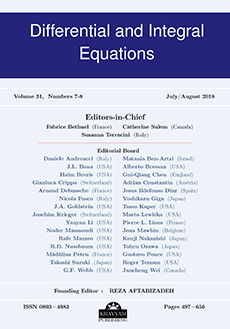Abstract
Coupling diffusion process of signaling molecules with nonlinear interactions of intracellular processes and cellular growth/transformation leads to a system of reaction-diffusion equations coupled with ordinary differential equations (diffusion-ODE models), which differ from the usual reaction-diffusion systems. One of the mechanisms of pattern formation in such systems is based on the existence of multiple steady states and hysteresis in the ODE subsystem. Diffusion tries to average different states and is the cause of spatio-temporal patterns. In this paper, we provide a systematic description of stationary solutions of such systems having the form of transition or boundary layers. The solutions are discontinuous in the case of non-diffusing variables whose quasi-stationary dynamics exhibit hysteresis. The considered model is motivated by biological applications and elucidates a possible mechanism of formation of patterns with sharp transitions.
Citation
Anna Marciniak-Czochra. Madoka Nakayama. Izumi Takagi. "Pattern formation in a diffusion-ODE model with hysteresis." Differential Integral Equations 28 (7/8) 655 - 694, July/August 2015. https://doi.org/10.57262/die/1431347859
Information





